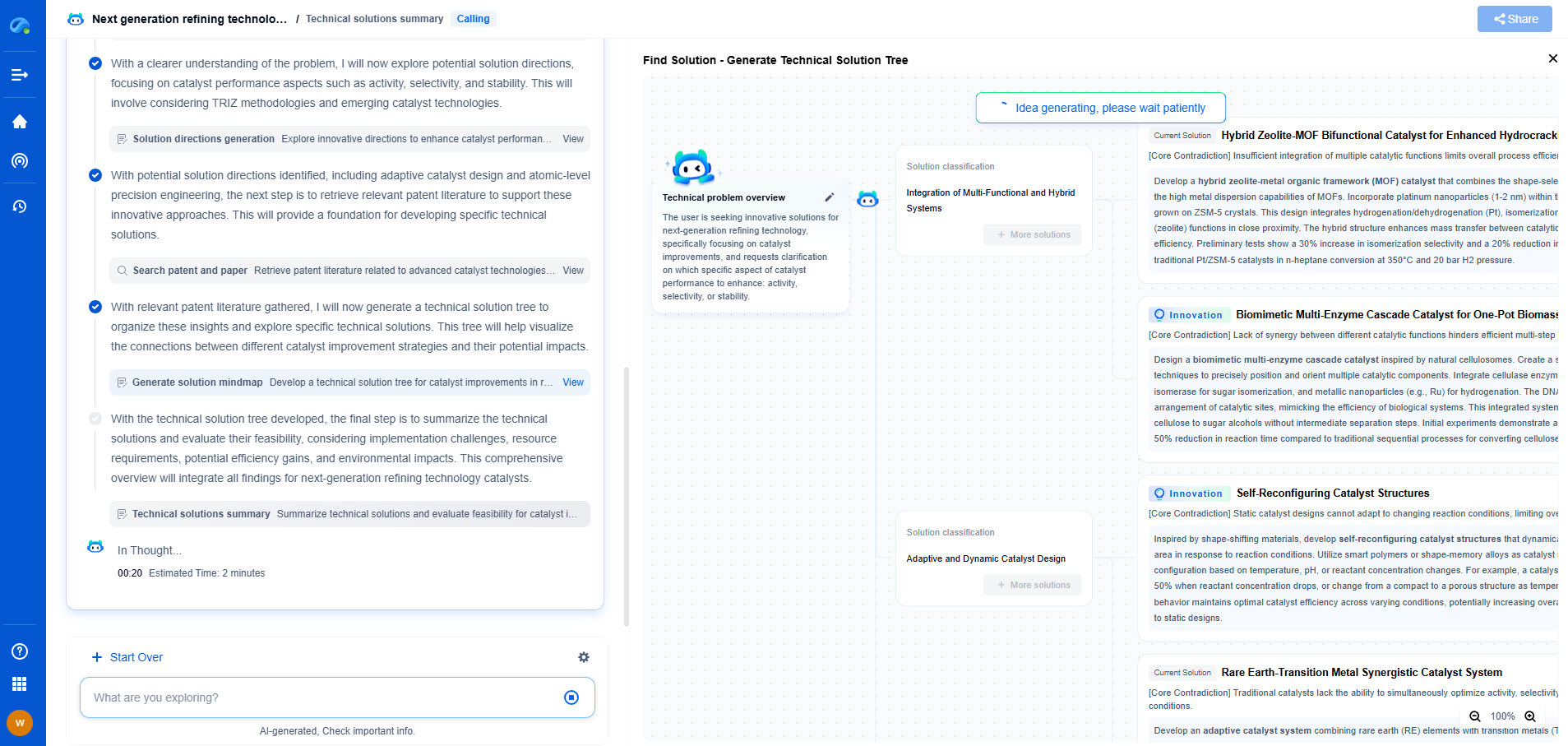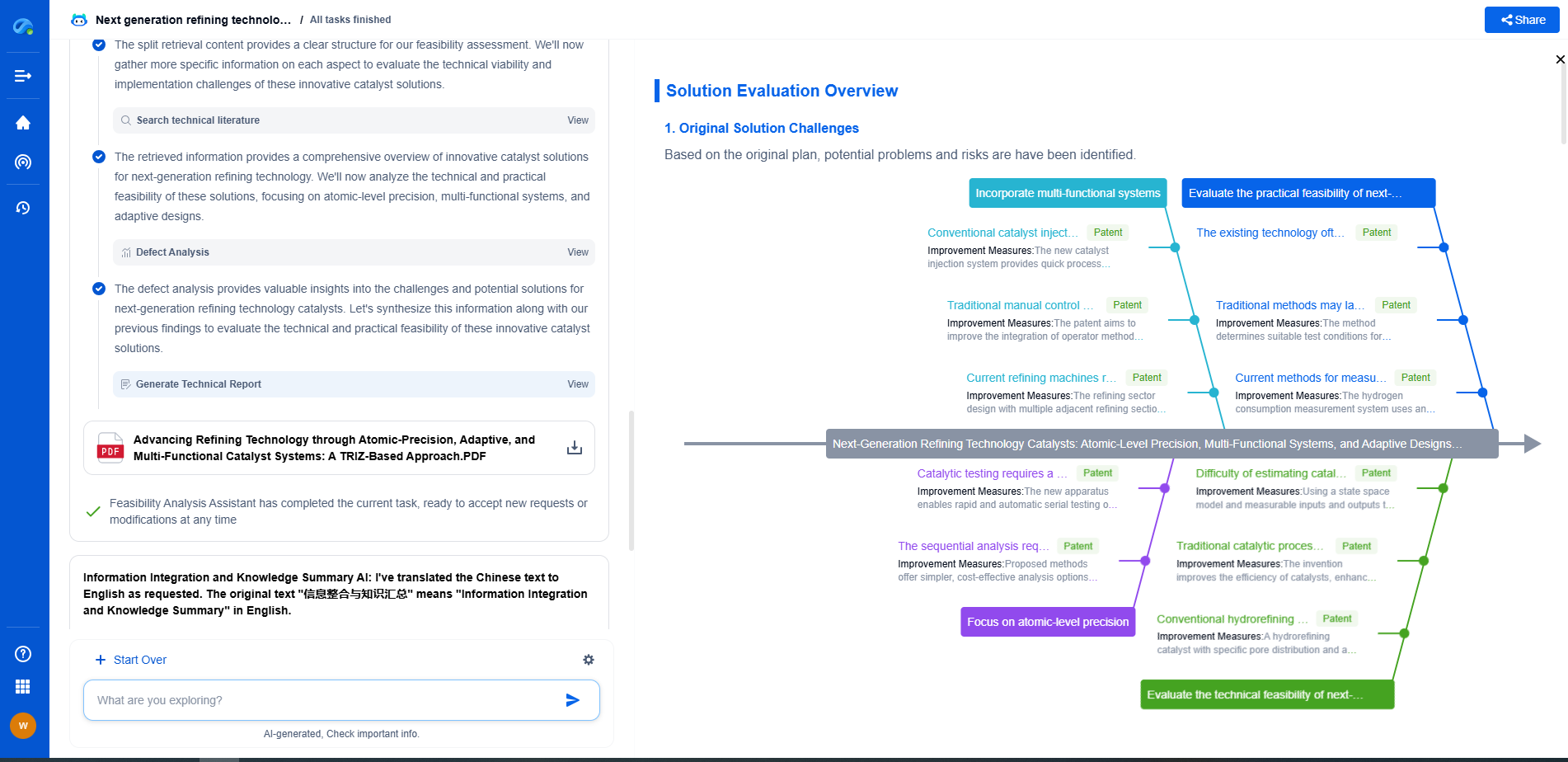Next-Generation Load Cells with Digital Interfaces and Self-Diagnostics
JUL 14, 2025 |
The landscape of industrial measurement and sensing technology is evolving rapidly, with next-generation load cells at the forefront of this transformation. These advanced devices are redefining how we approach load measurement by integrating digital interfaces and self-diagnostics, offering unprecedented accuracy, reliability, and ease of use. In this blog, we will explore the innovative features of these load cells and discuss their implications across various industries.
The Evolution of Load Cell Technology
Traditionally, load cells have been predominantly analog devices, relying on mechanical components and electrical signals to measure force or weight. While effective, these systems often required complex wiring and were susceptible to environmental factors, leading to potential inaccuracies. The advent of digital technology has revolutionized load cell design, enabling more accurate and reliable measurements.
Digital Interfaces: Enhancing Connectivity and Accuracy
One of the most significant advancements in next-generation load cells is the incorporation of digital interfaces. Unlike their analog predecessors, digital load cells can communicate directly with computers and control systems using protocols such as USB, Ethernet, or wireless connectivity. This digital communication enhances data accuracy by minimizing signal degradation and interference, resulting in more precise measurements.
Moreover, digital interfaces simplify the integration process, allowing load cells to seamlessly connect with existing systems. This ease of integration is particularly beneficial in complex operations where multiple load cells are used, as it reduces the need for extensive wiring and simplifies data collection and analysis.
Self-Diagnostics: Ensuring Reliability and Reducing Downtime
Another groundbreaking feature of modern load cells is their ability to perform self-diagnostics. With built-in sensors and algorithms, these load cells can continuously monitor their own performance and detect issues such as overload, misalignment, or temperature fluctuations. When a problem is identified, the load cell can alert operators in real-time, enabling proactive maintenance and reducing the risk of unexpected failures.
By employing self-diagnostics, businesses can significantly decrease downtime and maintenance costs. The load cells provide critical insights into their operational health, allowing for timely interventions before minor issues evolve into major failures. This proactive approach not only enhances operational efficiency but also extends the lifespan of the equipment.
Applications Across Industries
The enhanced capabilities of next-generation load cells make them invaluable across a wide range of industries. In manufacturing, they ensure precise weight measurement and control, which is crucial for quality assurance and process optimization. In the logistics sector, digital load cells facilitate accurate cargo weighing, improving inventory management and reducing transportation costs.
In the healthcare industry, these advanced load cells are used in medical devices for patient monitoring and treatment, ensuring high accuracy and reliability. Additionally, in construction and civil engineering, load cells play a vital role in monitoring structural loads, enhancing safety and performance in building projects.
The Future of Load Measurement Technology
As technology continues to evolve, we can expect even more sophisticated features to be integrated into load cell design. Enhanced data analytics, machine learning algorithms, and artificial intelligence may further refine the capabilities of load cells, enabling predictive maintenance and smarter decision-making processes.
The continued development of digital interfaces and self-diagnostic capabilities promises to further streamline operations and improve the precision of load measurements. As industries increasingly rely on data-driven decision-making, next-generation load cells will undoubtedly play a crucial role in shaping the future of industrial measurement and control.
Conclusion
Next-generation load cells with digital interfaces and self-diagnostics represent a significant leap forward in measurement technology. By enhancing connectivity, accuracy, and reliability, these devices are transforming industries and driving operational efficiency. As we continue to explore the potential of these advanced load cells, we can look forward to a future where precision and performance are seamlessly integrated into every aspect of industrial operations.
From 5G NR to SDN and quantum-safe encryption, the digital communication landscape is evolving faster than ever. For R&D teams and IP professionals, tracking protocol shifts, understanding standards like 3GPP and IEEE 802, and monitoring the global patent race are now mission-critical.
Patsnap Eureka, our intelligent AI assistant built for R&D professionals in high-tech sectors, empowers you with real-time expert-level analysis, technology roadmap exploration, and strategic mapping of core patents—all within a seamless, user-friendly interface.
📡 Experience Patsnap Eureka today and unlock next-gen insights into digital communication infrastructure, before your competitors do.
- R&D
- Intellectual Property
- Life Sciences
- Materials
- Tech Scout
- Unparalleled Data Quality
- Higher Quality Content
- 60% Fewer Hallucinations
Browse by: Latest US Patents, China's latest patents, Technical Efficacy Thesaurus, Application Domain, Technology Topic, Popular Technical Reports.
© 2025 PatSnap. All rights reserved.Legal|Privacy policy|Modern Slavery Act Transparency Statement|Sitemap|About US| Contact US: help@patsnap.com

